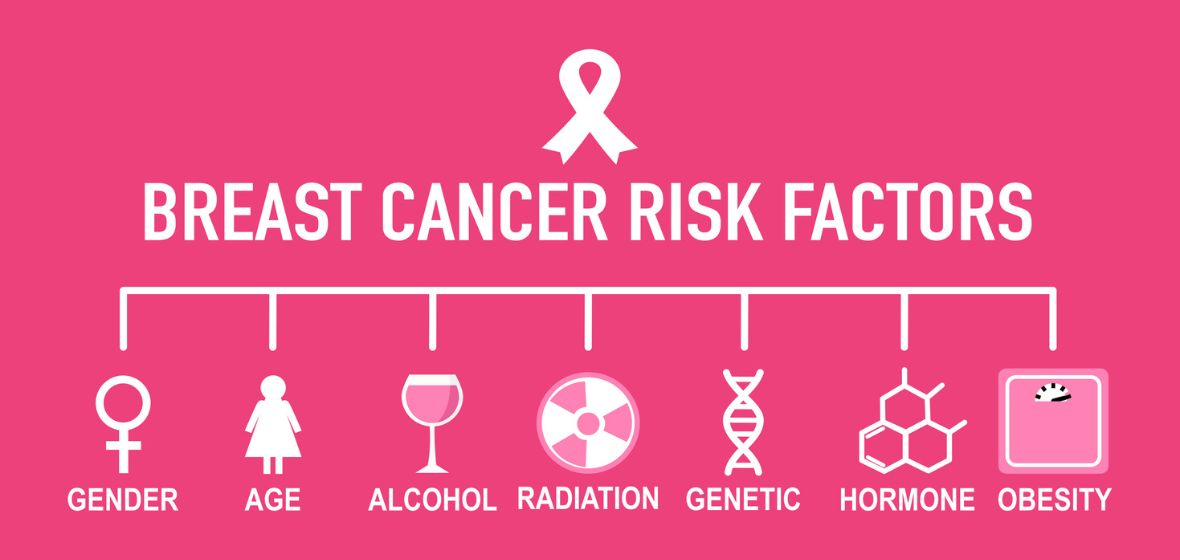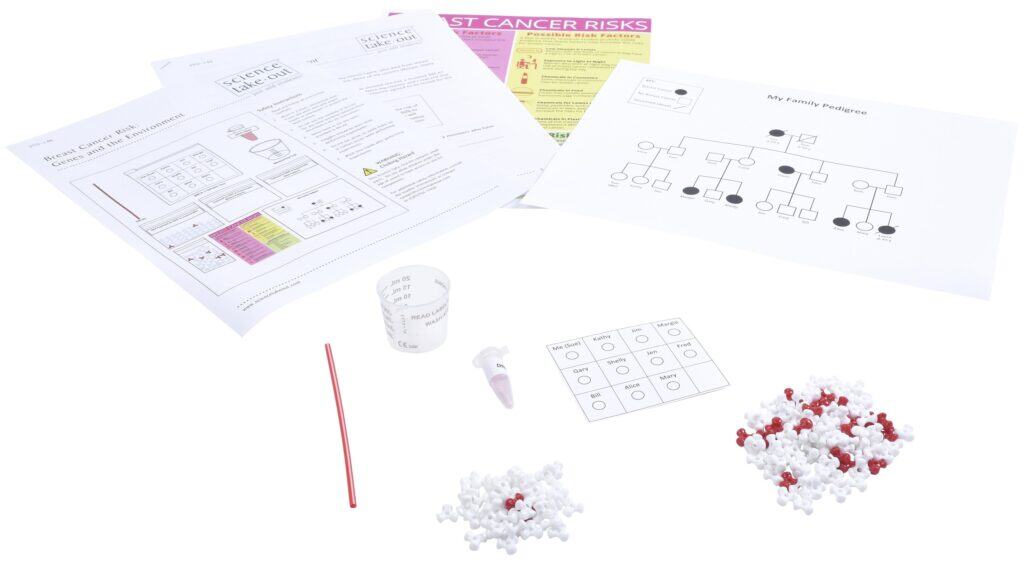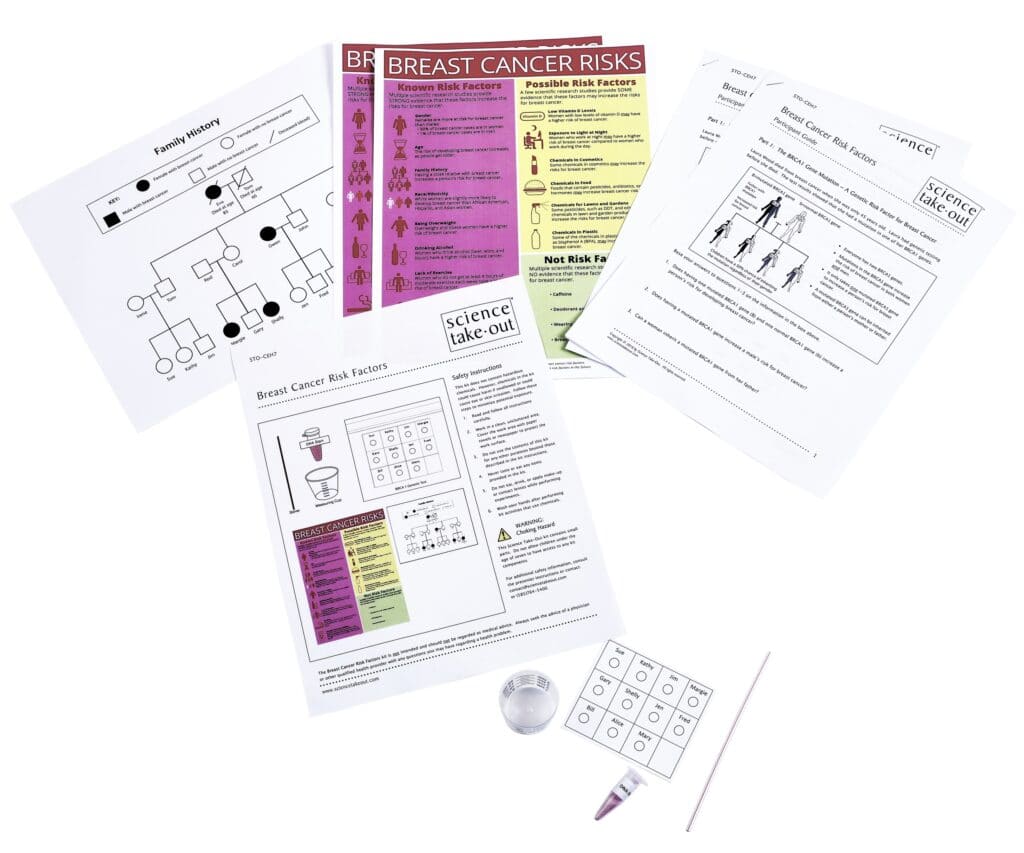
It is estimated that 1 in 8 women in the United States (~13%) will develop invasive breast cancer over the course of their lifetime and 1 in 50 women will develop invasive breast cancer by the age of 50. Breast cancer is the most diagnosed cancer in US women (other than skin cancer) and is the second leading cause of death in US women (after lung cancer).
According to the new Breast Cancer Facts & Figures 2024-2025 report from the American Cancer Society, rates of breast cancer climbed by 1 percent a year from 2012 to 2021, and even more sharply among women under age 50. The greatest increase in the rates of breast cancer by age over the decade is among women in their 20’s.
An individual’s risk of developing breast cancer is influenced by specific genes, lifestyle choices, hormonal factors, and environmental exposures over their lifetime. Our two kits highlighted below explore genetic and environmental risk factors for breast cancer.
Breast Cancer Risk: Genes and the Environment
- Analyze a family’s pedigree for the occurrence of breast cancer.
- Conduct simulated DNA testing for the BRCA1 gene.
- Complete a survey on risk factors associated with breast cancer and then analyze the survey responses based on a “What Science Says” factsheet.
- Analyze data from an experiment indicating that environmental exposures during childhood (before puberty) may increase risks of breast cancer.
- Use beads to model effects of DDT insecticide exposure before puberty and after puberty.
Breast Cancer Risk Factors (Community Environmental Health kit)
- Conduct simulated genetic tests to identify individuals with a BRCA1 mutation that is an inherited risk factor for breast cancer.
- Use a Breast Cancer Risks infographic to identify other risk factors for breast cancer.
NOTE: Science Take-Out Community Environmental Health (CEH) kits are simplified versions of our “regular” kits (shortened/modified activities and lower literacy). The kits also encourage discussions about ways to reduce exposures to environmental health hazards.

